The physician’s patient is seated in the examination room, awaiting her doctor. As the door opens, the physician steps in, ready to offer care. But this isn’t your ordinary patient encounter—AI is quietly listening and observing in the background. The patient speaks about her symptoms, her experiences, and her concerns. The doctor listens attentively, examines her, and provides thoughtful recommendations.
It feels like the perfect doctor-patient interaction—no frantic scribbling of notes, no interruptions to update electronic health records, no rush to complete billing tasks. How? AI has already done it all. From composing notes, processing billing codes, and managing prescription orders to scheduling the next follow-up visit—everything is seamlessly taken care of.
The patient leaves feeling truly heard. The doctor, instead of feeling bogged down by paperwork, has a renewed sense of purpose and time to unwind between patients. It’s an AI win for patient care and a boost to physician well-being.
“If AI were used in this way, it would be a game-changer. However, the line between this ideal and the reality of AI implementation is vast,” explained Mark Billman, DMD, MD, a specialist in Oral and Maxillofacial Surgery.
Dr. Billman has served in leadership roles throughout his esteemed medical career. Recently, he has taken on pivotal roles in both statewide and national initiatives focused on reducing physician burnout and fostering improved well-being within the medical community.
To understand how artificial intelligence can help reduce physician burnout, it’s crucial to first explore the broader context of burnout itself—its history, causes, and symptoms, Dr. Billman noted.
Additionally, two key factors must be considered when evaluating AI’s potential to ease burnout: What are the specific goals healthcare systems aim to achieve when investing in costly AI solutions, and what are the expected returns on that investment? Answering these questions is essential for determining AI’s true impact on the well-being of physicians.
“Is the goal to foster well-being or faster productivity?” said Dr. Billman. “Take the extra time to take care of yourself or, fill the extra time that AI creates to see more patients?”
The goal matters.
‘Burnout was not classified as a disease until 2019.’
“We have examined burnout numbers for professionals like teachers, pilots, and dentists,” explained Dr. Mark Billman. “But aside from nurses, the healthcare profession has largely been overlooked.”
It wasn’t until 2019 that the World Health Organization (WHO) officially classified burnout as a disease.
“You can’t bill for something that isn’t considered a disease,” Dr. Billman added, highlighting a critical barrier to addressing the issue effectively.
Dr. Billman experienced the realities of burnout firsthand in 2018-2021, when he served as chief of staff for 700 physicians. Throughout his career, he has experienced burnout too, he shared.
This was during a period when alarming data emerged, particularly from the American Medical Association (AMA), which reported that nationally physician suicide rates equating to one doctor a day. “That’s the equivalent of losing two full medical classes per year—well above the national average,” Dr. Billman noted.
In response to these troubling trends, in 2019, the AMA and the National Academy of Medicine launched the Action Collaborative on Clinician Well-Being and Resilience, a collaborative program to which Dr. Billman and the SCMA contribute. One of the early goals was to gather data and reverse the alarming trajectory. Pre-COVID-19 statistics already painted a grim picture, with 51% of U.S. physicians reporting burnout. The highest rates were seen among family medicine doctors, emergency physicians, and intensive care specialists.
“And then COVID hit,” said Dr. Billman. “The burnout rate soared to 61%, with one in 10 physicians having considered, or attempted, suicide. Unfortunately, it often takes a crisis of this magnitude for people to wake up.”
Understanding The Current Causes
The symptoms of burnout are all too familiar: fatigue; impatience; isolation; low enthusiasm for aspects of the job that once engendered a sense of purpose.
Understanding the causes for burnout is a critical step toward turning around burnout’s rising rates, Dr. Billman explained.
In 2018-2019, the number one cause linked to physician burnout was electronic health records, according to Dr. Billman.
“In 2022, as we were emerging from COVID, electronic health records dropped to the third cause after ‘staffing’ and ‘corporatization/lack of autonomy,’” Dr. Billman explained. “But electronic health records have jumped to the top again.”
“Electronic health records came from Obama with the American Recovery and Reimbursement Act (ARRA). The intentions were genuine.” Dr. Billman added. “Physicians need a good database to make clinical decisions; we need a way to track quality and safety data; more people need to be held accountable – there needs to be national accountability.”
The initial rollout of electronic health record (EHR) programs was a turning point in healthcare, but not necessarily for the better. Lacking significant physician input, these early platforms were clunky and unintuitive. What once took 15 minutes to record after a patient visit quickly ballooned into 30 to 40 minutes of tedious documentation. Many physicians soon found that for every hour spent with a patient, they had to dedicate two hours to coding and administrative tasks related to EHRs.
“If you walk through a hospital, you’ll notice nurses entering data more often than they’re directly caring for patients,” observed Dr. Billman. “Doctors may only spend a minute or two with patients before heading back to their keyboards.” The burden of documentation began to overshadow time spent on patient care.
Compounding the issue, Dr. Billman noted that all this data was being entered into incompatible systems. The lack of interoperability between platforms only added to the frustration, leading to inefficiencies that weighed heavily on healthcare professionals, further contributing to burnout.
The AI Fairytale Can Be Real
Artificial intelligence (AI) holds the potential to ease physician burnout, particularly when healthcare organizations adjust their expectations for the technology’s return on investment. Rather than focusing solely on short-term boosts in productivity, if the investment is aimed at enhancing physician well-being over the long term, AI could be a gamechanger in reducing burnout.
“When AI is implemented with a focus on supporting doctors rather than just efficiency, the impact can be profound,” noted Dr. Billman.
Dr. Billman is quick to note that when physicians feel valued, stress and burnout decrease.
“It’s such an easy, inexpensive solution to burnout,” said. Dr. Billman. “Helping physicians feel valued can be as simple as a CEO walking out of the office and going down to the ER.”
For Dr. Billman, the “AI Fairytale” becomes a reality when AI is used to enhance both physician well-being and efficiency. By freeing up time for self-care and increasing productivity, AI allows doctors to return to what truly fuels their passion: helping patients heal.
Learn More: ama-assn.org/practice-management/physician-health/ama-physician-well-being-program
Dr. Mark Billman At-A-Glance
The Center for Oral and Maxillofacial Surgery, Rock Hill, SC
Education & Training
Dental School: University of Pittsburgh, School of Dental Medicine
Medical School: Medical College of Pennsylvania
Residency: Allegheny General Hospital
Specialties
Oral & Maxillofacial Surgery
Burnout By The Numbers
The Physicians Foundation’s 2023 Survey of America’s Current and Future Physicians focuses on the state of physician, resident, and medical student wellbeing as well as physician practice environments—and the solutions needed to improve both. The survey was conducted from June 8 through June 28, 2023, and the data presented is based on 2,114 responses.
Medical students’ overall wellbeing is lower than both residents and physicians.
- Three-quarters of medical students have felt inappropriate feelings of anger, tearfulness or anxiety, much more compared to residents (68%) and physicians (53%).
- More than half of medical students (55%) have felt hopeless or that they have no purpose, greater compared to residents (43%) and physicians (34%).
- More than two-thirds of medical students report withdrawing from family/friends/co-workers, significantly higher compared to residents (52%) and physicians (42%).
- Nearly two-thirds of medical students have felt levels of debilitating stress, much more compared to residents at 45%.
Additionally, current and future physicians alike report stigma and structural barriers negatively affect their overall wellbeing and mental health.
- Nearly eight in 10 physicians (78%), residents (79%) and medical students (76%) agree that there is stigma surrounding mental health and seeking mental health care among physicians.
- Approximately half of physicians (48%), residents (48%), and students (55%) said they know a physician/colleague/peer who said they would not seek mental health care.
- Four in 10 physicians were either afraid or knew another physician fearful of seeking mental health care given questions asked in medical licensure/ credentialling/insurance applications.
- Nearly five in 10 residents and medical students were either afraid or knew another colleague fearful of seeking mental health care given questions asked in medical licensure/credentialing/ insurance applications.
Source: The Physicians Foundation’s 2023 Survey of America’s Current and Future Physicians


